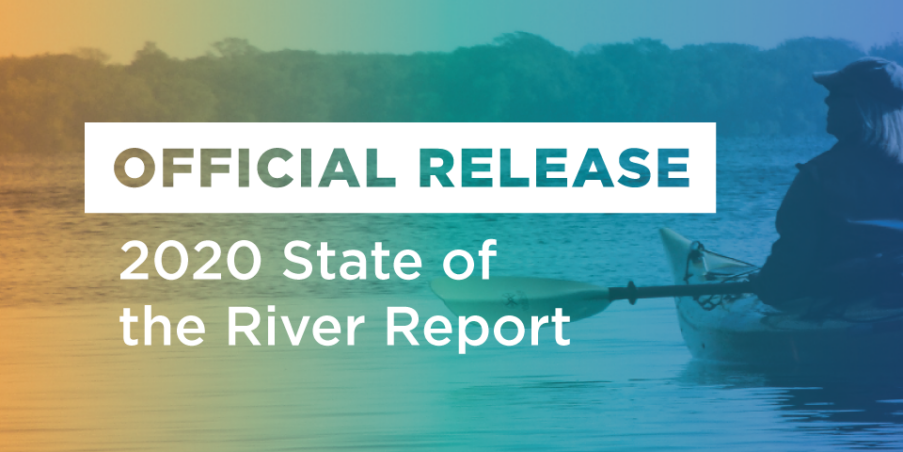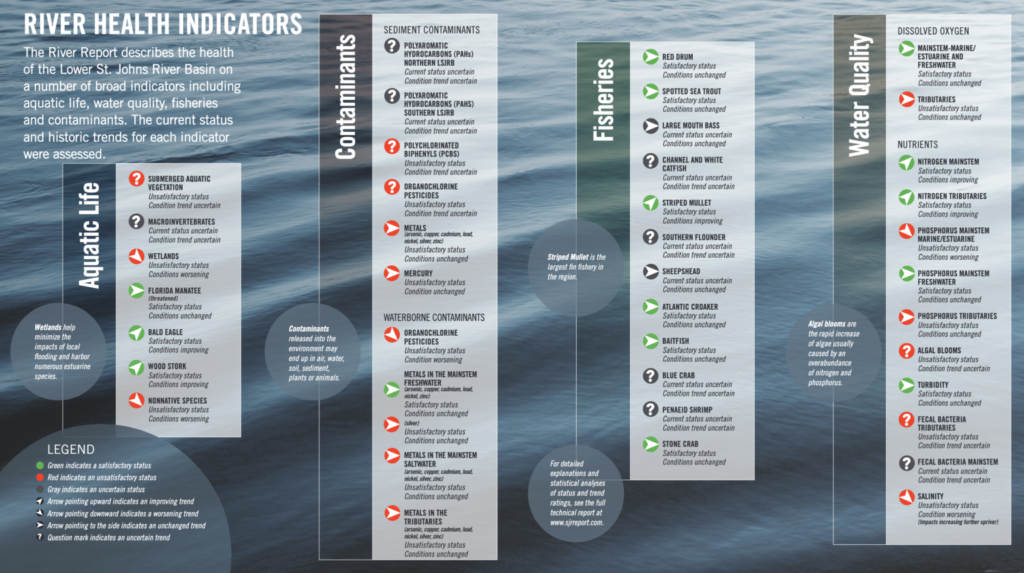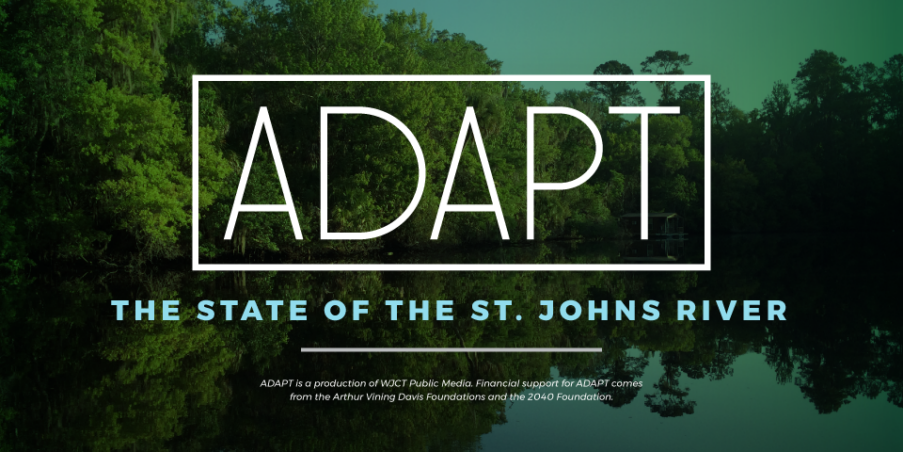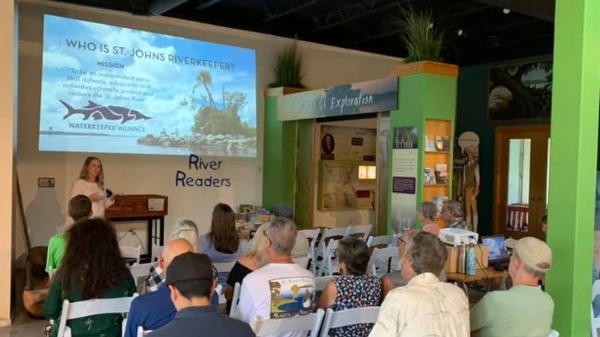The 13th annual Lower St. Johns Basin State of the River Report provides reasons to be optimistic, but also makes clear that much work remains to improve the health of our tributaries, reduce the impacts of sewage sludge, protect wetlands and address the increasing threat of saltwater intrusion and sea level rise.
The State of the River Report is an annual report produced by scientists and researchers from Jacksonville University, the University of North Florida and Florida Southern College and is funded by the Jacksonville Environmental Protection Board. The report consists of four sections: Aquatic Life, Contaminants, Fisheries, and Water Quality.
Guide for the General PublicFirst the good news.
In part due to the longstanding advocacy efforts of St. Johns Riverkeeper, total nitrogen in the Lower St. Johns continues to decline. This has been a priority of St. Johns Riverkeeper since our inception. Two major lawsuits involving our organization resulted in more stringent pollution standards that led to significant reductions in nitrogen in the River.
The state of our tributaries is a “cause for alarm.” – Stated Dr. An-Phong Le during the official release of the St. Johns River Report
Reasons for Concern:
- Fecal coliform levels in the tributaries still greatly exceed water quality criteria.
- Total Phosphorous concentrations in the marine section of the Lower Basin are worsening.
- Salinity continues to increase despite recent storms over the past three years that have contributed significant freshwater to the system. Increases in salinity can damage or destroy freshwater wetlands, trees, and submerged grasses.
- Submerged aquatic vegetation (SAV) has dramatically declined in the basin due in part to severe drought followed by major storms. SAVs provide critical habitat for fisheries and invertebrates and absorb nutrients.
- Wetlands continue to be lost due to development pressures, which will likely contribute to future flooding from storm surge and sea level rise.
Recommendations:
- More funding is needed to remove failing septic tanks that continue to pollute our tributaries with harmful bacteria and nutrients and create a human health hazard.
- More attention must be placed on how to improve the health of our tributaries, and in turn, benefit surrounding neighborhoods. The St. Johns River is only as healthy as our tributaries, so let’s get started!
- Excess phosphorous is still a problem for the St. Johns. The land disposal of sewage sludge in the Upper Basin and Middle Basin is likely a major source and must be more tightly regulated.
- Resiliency policies must include better protections for tributary headwaters and wetlands, and improvements in how we manage stormwater.
Missed the Virtual Release?
Following the release, Lisa Rinaman, your St. Johns Riverkeeper, joined Dr. Quinton White (Executive Director of JU’s Marine Science Research Institute), Melissa Long (Chief, COJ Environmental Quality Division), and Jacksonville City Councilman Garrett Dennis to discuss the findings in the report in more detail. Watch that here.
Request a Speaker for Your Group
If you are a member of an organization or part of a group that is interested in a presentation on the State of the St. Johns River, your neighborhood tributary, or any other topic related to the River, please contact us by filling out our Speaker Form.
Request a Speaker Form


